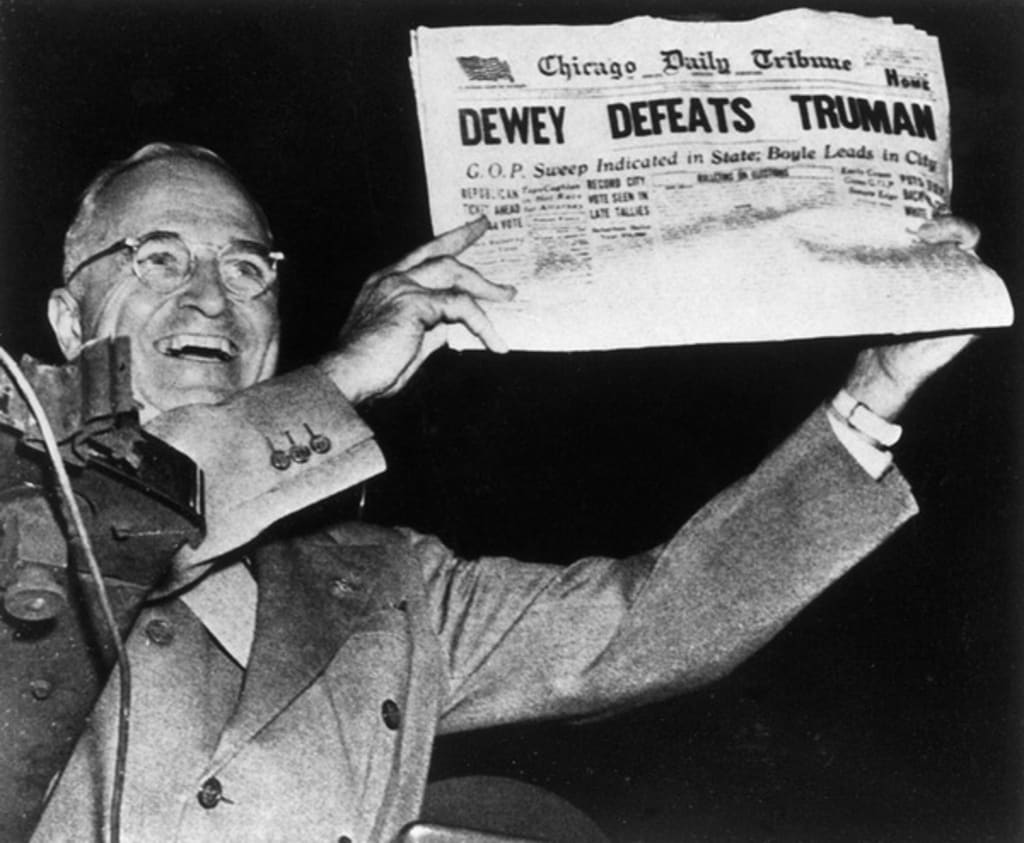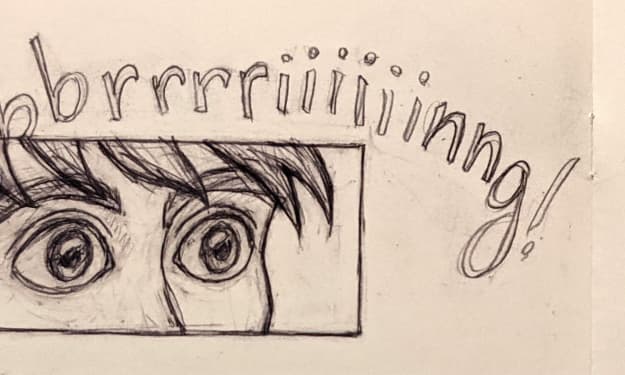Truman Defeats Dewey
Democratic Conventions 1944-1948

The Tenth in a 20 part series on the Democratic National Convention
1944: Don’t Swap Horses in Midstream
Dates: July 19 - 21, 1944
Venue: Chicago Stadium, 1800 Madison Street, Chicago IL. Chicago Stadium was one of the premium sports venues in America from 1924 until 1994. It was torn down to make way for the United Center. The site today is the parking lot for the United Center. A plaque on the ground marks the former location of the stadium.
Events: A month after D-Day, Democrats met again in Chicago. They nominated Franklin Roosevelt again with 92 percent of the vote. Worried about Roosevelt’s mortality, party leaders urged him to replace Henry Wallace, whom they viewed as a wild eyed liberal (which he actually was). Harry Truman had gained some notoriety as the head of a committee that exposed corruption and war profiting, and FDR agreed to take on him in the name of unity.
FDR died in April 1945, and Truman became the 33rd President.
The Democratic Platform was remarkably progressive. It supported the United Nations, called for the GI Bill and even had suffrage for residents of Washington DC. It also supported the creation of the nation of Israel.
Celebrity Watch: Actress Gloria Swanson attended the convention.
November: Roosevelt faced off against New York Governor Thomas Dewey, who had built his reputation as a crusading prosecutor. America wasn’t ready for a new president, and relected FDR by a margin of 432 to 99. His margin in the popular vote was 25.6 million to Dewey’s 22 million.
1948: Give Em Hell Harry
Dates: July 12 - 14, 1948
Venue: Philadelphia Convention Hall, 3400 Civic Center Blvd, Philadelphia PA. Site of the 1936 convention, it was torn down in 2005. The site now houses the Perelman Center for Advanced Medicine, associated with the University of Pennsylvania. Philadelphia was chosen because the big television networks were linked by cables between New York City and Philadelphia, so they could provide live coverage of the convention to the East Coast.
Events: Truman was not exactly the most popular guy in the Democratic Party in 1948. Many party leaders saw him as a sure loser and tried to recruit alternatives, including Dwight Eisenhower. However, incumbency has its advantages, and Truman was renominated on the first ballot with 75 percent of the vote. Senator Richard Russell of Georgia got most of the rest.
Alben Barkley of Kentucky gave a fantastic keynote blasting the Republicans, and it led to him getting the nod for Vice President from delegates.
Democrats botched the first televised convention. Truman was supposed to speak at 10 p.m., prime time for the news broadcasts, but wound up speaking in the early hours of Friday morning. It was a shame, because Truman gave a fiery speech blasting the “Do Nothing 80th Congress” and setting the stage for the “Give them hell” campaign he ran that fall.
The most critical events of the 1948 convention revolved around race. Hubert Humphrey, then the mayor of Minneapolis, rose to national prominence speaking in favor of civil rights. He declared: “The time has arrived in America for the Democratic Party to get out of the shadow of States’ Rights and walk forthrightly into the sunshine of human rights.” Delegates did, passing a strong civil rights plank.
That led members of the Alabama and Mississippi delegations to storm out in anger. They formed their own party, The States Rights Democratic Party (Dixiecrats), and nominated South Carolina Governor Strom Thurmond for President.
November: Truman led a barnburning campaign across the country, blasting the Republican Congress, while opponent Tom Dewey (back from 1944) ran an “above it all” campaign, assuming that he would coast to victory. Most of the press and pundits assumed Dewey would win as well.
Truman stunned everybody by trouncing Dewey in the Midwest and the West, winning the electoral college 303 to 180. Thurmond won several Southern states and 39 electoral votes.
Truman almost beat Dewey in New York, coming within 1 percent. The popular vote was close, 24 million for Truman to 22 million for Dewey. Former vice president Henry Wallace ran against Truman from the left, and got 1.1 million votes. Thurmond's support was limited primarily to the South, where he received almost a million votes.
Truman’s victory was one of the great upsets in US political history, and the picture of Truman holding the extremely wrong Chicago Tribune headline “Dewey Defeats Truman” is one of the iconic images of the 20th century.






Comments
There are no comments for this story
Be the first to respond and start the conversation.